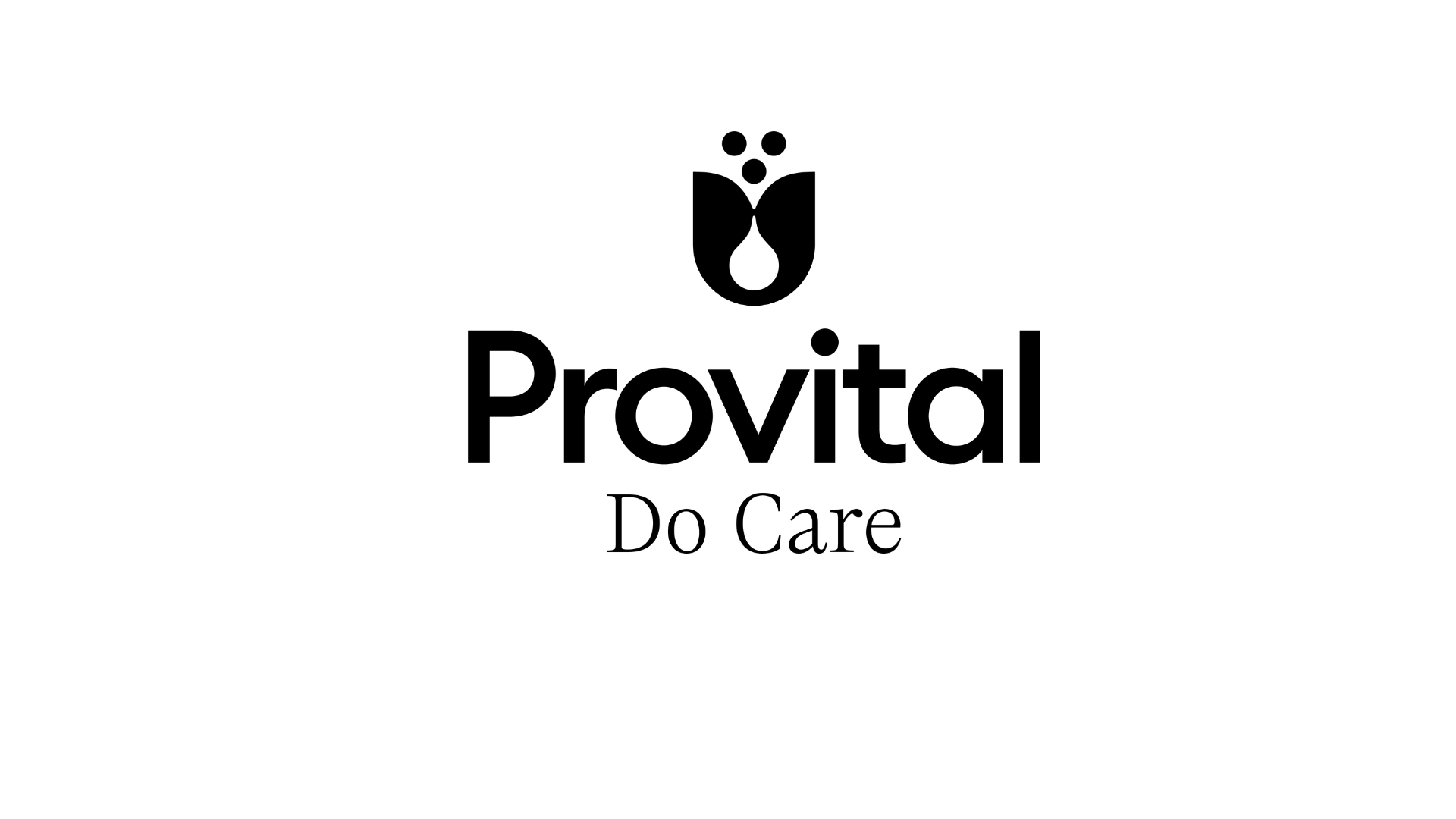1. CARBON FOOTPRINT CONCEPT
1.1 What is doing the market?
The indicators and the real changes that we are already seeing on the planet mean that there is a growing awareness of the impact of climate change and therefore action is accelerating, either because of market pressure, because of consumers themselves, or because of the policies and regulations that are coming out, which as always are late and untimely, but it is clear that they will be increasingly relevant and will put more pressure on markets and companies.
Of the 1000 largest companies in the US. This is what they are doing in terms of their carbon footprint:

The important thing in this process is to move from phase 1-2 to phase 3 and 4.
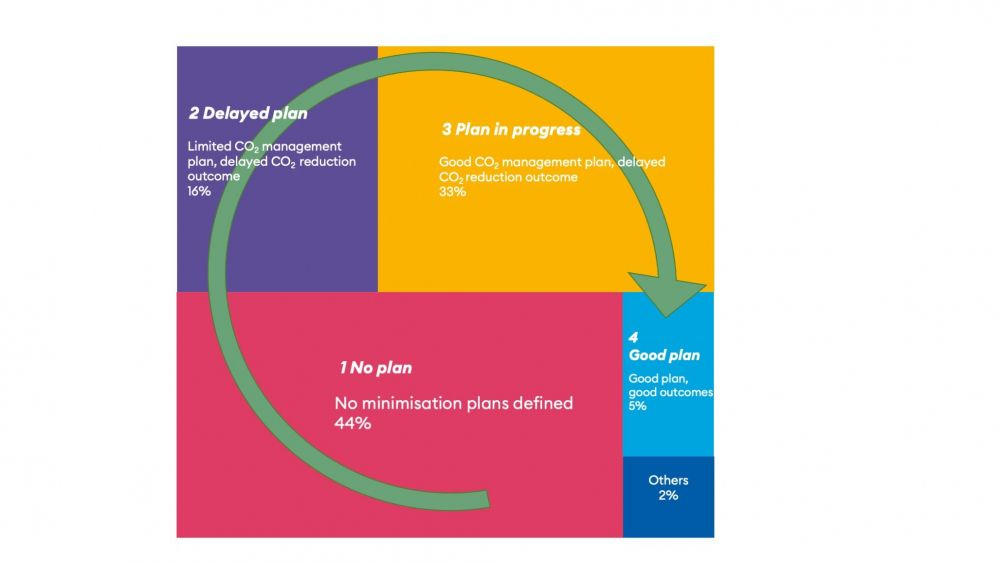
1.2 What does the carbon footprint concept imply?
It is important to start the process of calculating the carbon footprint of our organisation in order to start working in this direction, not with the intention of leading the process or being proactive, it is simply to follow market trends and nothing will be a minimum requirement for regulatory compliance.
When we talk about calculating the carbon footprint, it means
- Calculate the carbon footprint of the organisation, taking into account the different scopes (1,2,3).
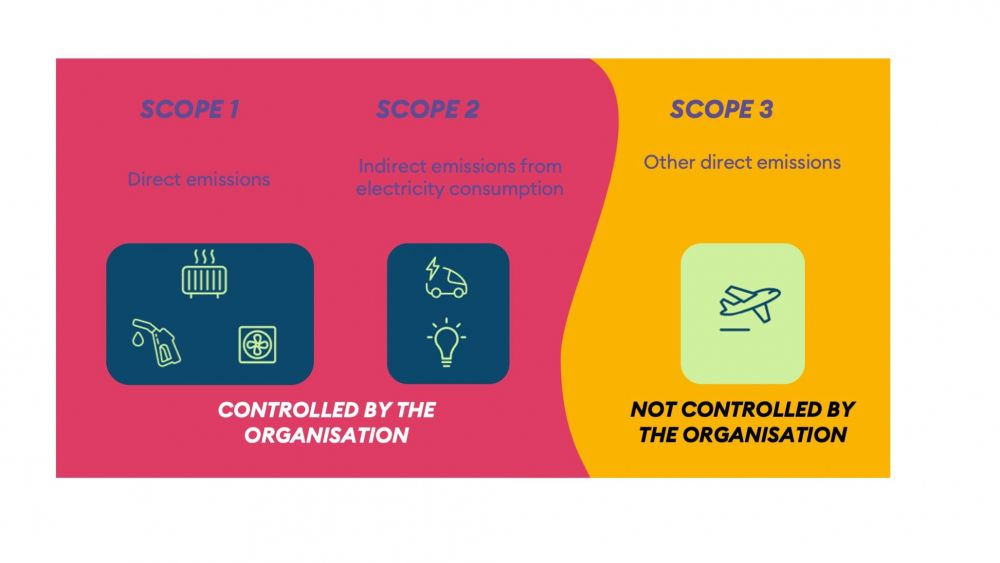
- Create an ambitious minimisation plan: with short and long term targets, clear and in line with SBTi and the Paris Agreement.

-
Seek offset projects for company emissions that cannot be reduced. Projects verified and certified by recognised bodies: International Carbon Reduction and Offset Alliance (ICROA), Verified Carbon Standard (VCS), Gold Standard, The Climate, Community & Biodiversity Standards (CCB), Reducing Emissions from Deforestation and Forest Degradation and more + Social & Environmental Standards (REDD+ SES).

1.3 Are we offsetting our footprint?
When we talk about offsetting, we have to be careful that not everything goes. The important part of the process, as mentioned above, is to create ambitious minimisation plans and actions and then compensate for what we have not been able to reduce. It is clear that in the early stages the minimisation actions are smaller and as we progress with our plans we achieve greater results.
The market has also noticed this change and there is a shortage of offset projects and we have even heard of cases of fraudulent offsets or projects that have sold more tonnes of CO2 than were available in the project. It is therefore necessary to be careful when looking for the most suitable partners: ECOACT, PUR Projet, South Pole, Reforest'Action, etc.
1.4 Carbon footprint scope and verification
In order to give validity, robustness and seriousness to the footprint calculation, it is important to rely on the best known references such as the GHG Protocol or ISO 14064, taking into account the importance of the different aspects of the carbon footprint.
There are many footprints and many calculations. It is very difficult to make comparisons between similar companies in the same sector, precisely because of the wide variety of scopes and calculation systems.
Calculating the footprint with Scope 1 and 2 is fine, but it is not enough. Typically, large emissions are in scope 3, and not all companies calculate it because it is more complex and requires more data processing. But it is important to include this scope in the calculation.
It is also important to validate the calculation with an external verification that provides robustness and transparency when communicating our footprint, the scopes considered and the exclusions.
1.5 What are we doing in Provital and at what stage are we?
In Provital, we have started the process of calculating the carbon footprint in 2 phases, a first one in 2021, where we started to calculate the carbon footprint of Provital Barcelona and a subsidiary (Paris) to begin to gain experience, and in 2022 we already proceeded to calculate the 2021 carbon footprint of the whole group.
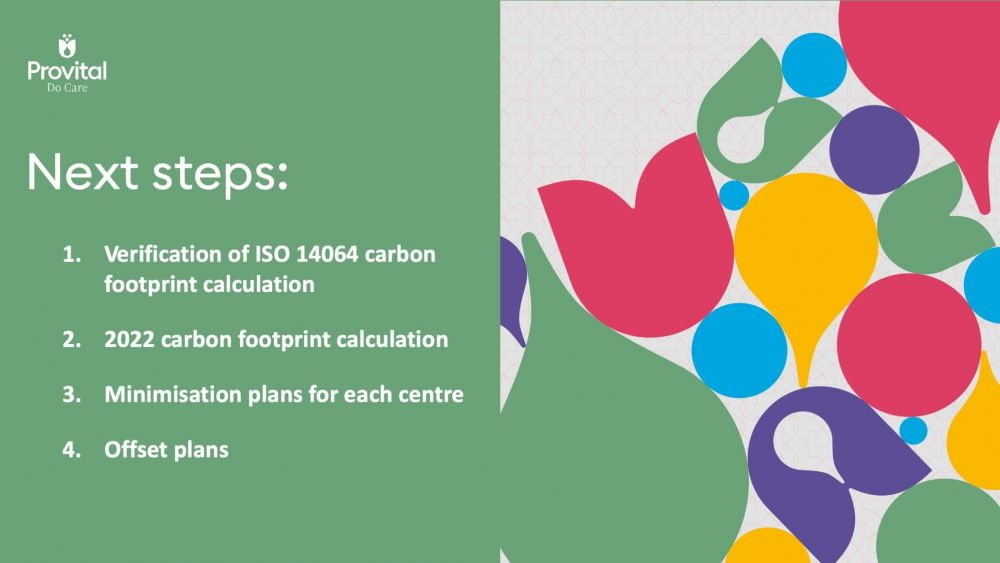
- We are currently in the process of verifying the carbon footprint with 2021 data, scheduled for April/May 2023.
- We have also started to define the short and long term minimisation plan of the parent company, to be complemented by the actions of the subsidiaries by the end of this year, early 2024.
- We will soon start collecting the data for the 2022 carbon footprint calculation, with the aim of publishing it in September.
- Finally, we are looking for various offset projects to compensate for the 2021 carbon footprint for the first half of 2023.
Key minimisation targets in line with SBTi and the Paris Agreement:
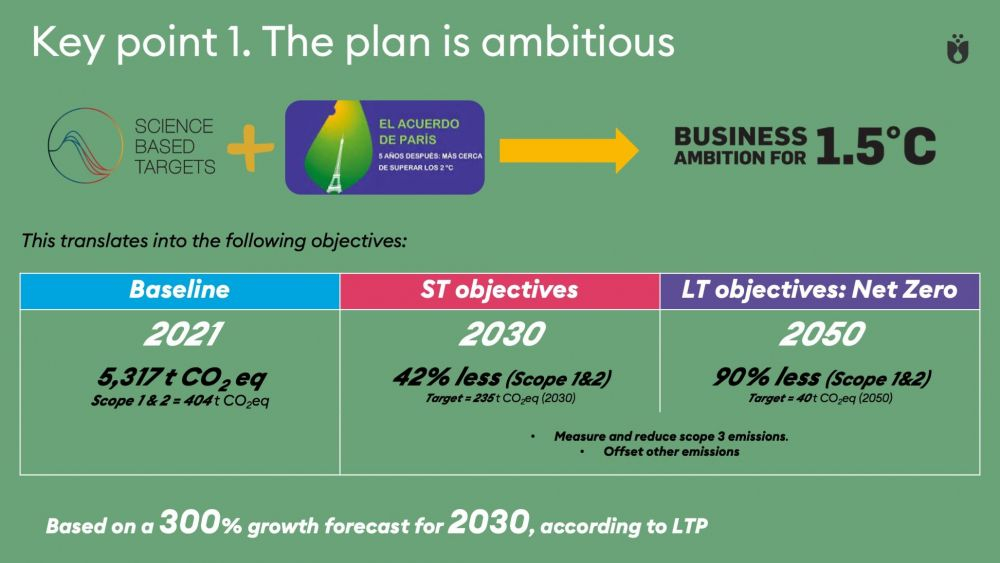
2. Sustainability policy
2.1 Definition of policy
An organisation's sustainability policy must be realistic and in line with the company's strategy, taking into account all stakeholders, both internal and external. It is important to consider the possibility of external support to help us along the way, experts in the field to guide us and allow us to do a good job of both internal and external analysis.
The policy must take into account the dimensions of corporate sustainability, which encompasses 3 main areas: Social, Environmental and Governance
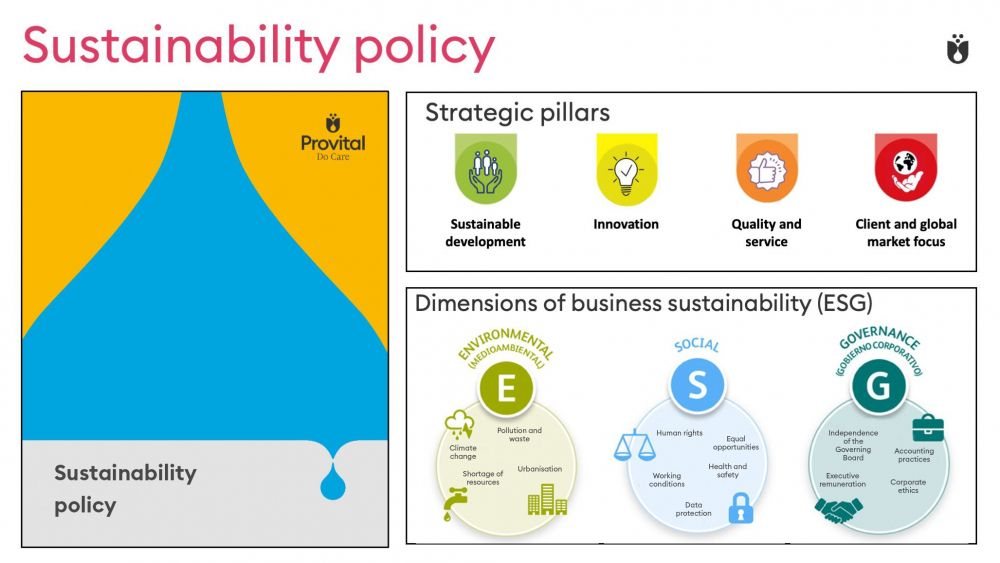
2.2 Strategic areas of sustainability
From this initial framework, the different strategic areas of sustainability for the company need to be defined and integrated into the organisation, in a cross-cutting way that encompasses all areas and departments of the company.
Each of the strategic areas must be developed and clear and transparent objectives must be defined in order to make progress in each of them.
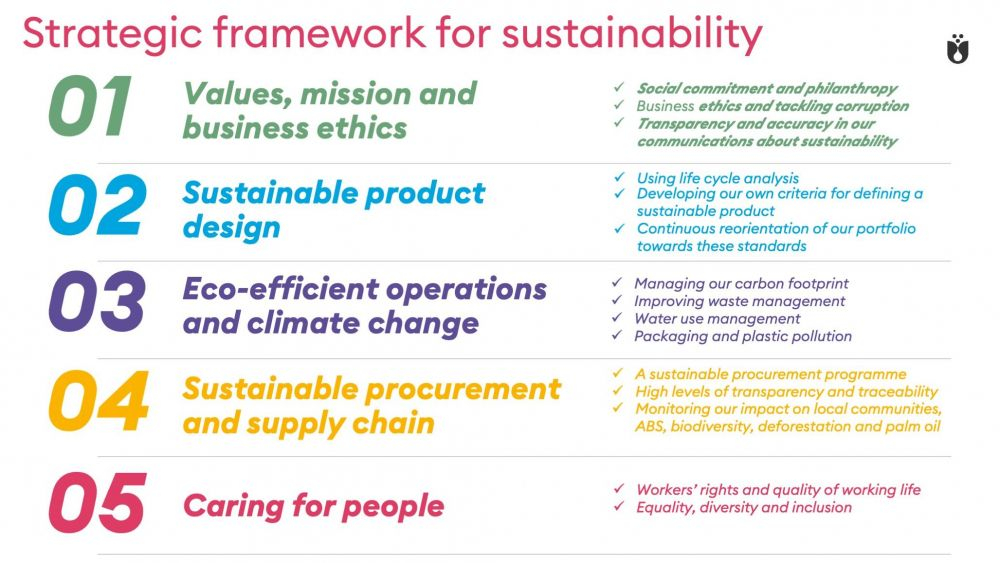
In the case of PROVITAL, we have defined our sustainability policy as OUR IMPACT and developed it from 5 strategic areas. For each of the defined areas, we have created different action plans so that we can act for a purpose, for sustainable products, for the planet, for resources and for people.
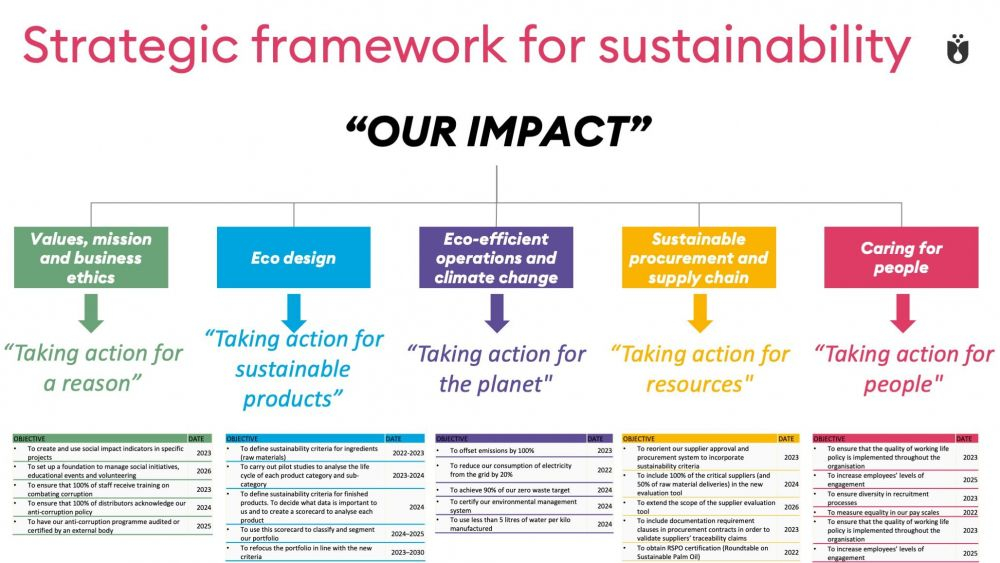
All of this is reflected in our policy and our sustainability report, which you can see at: https://www.weareprovital.com/es/sostenibilidad
2.3 Ours web of sustainability Provital
Ranged with this new concept and our new politics of sustainability are creating a new web of sustainability to create content and share the actions and advances in each one of the 5 strategic areas of clear-cut sustainability in Provital.
